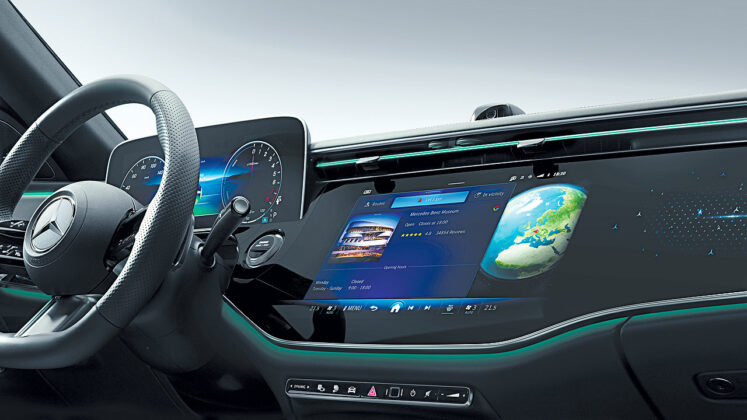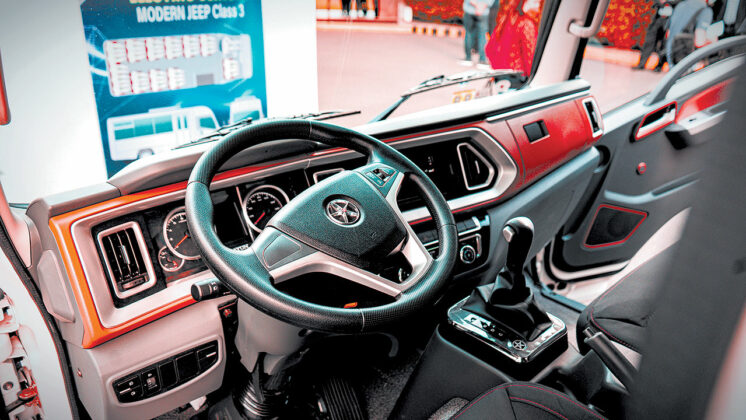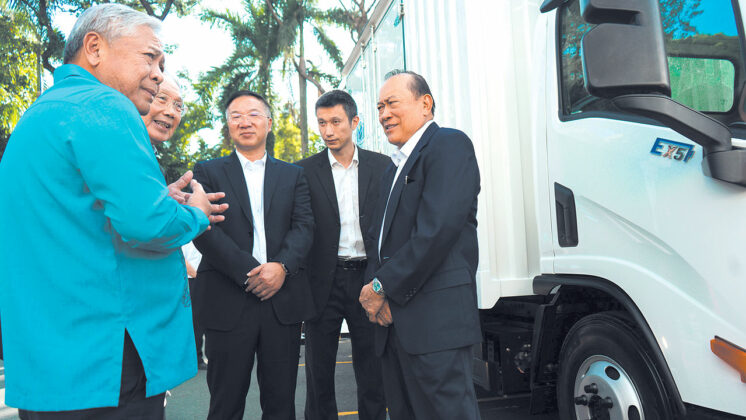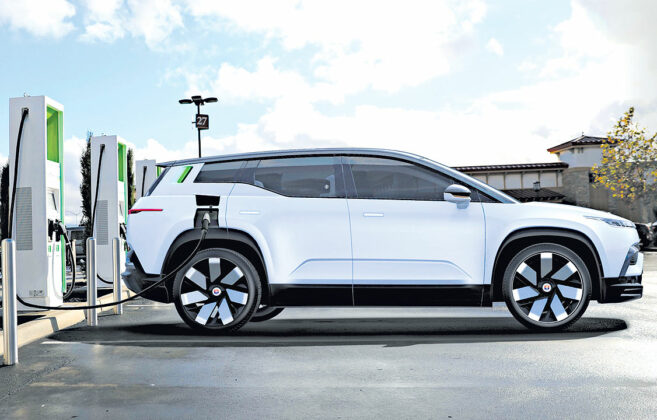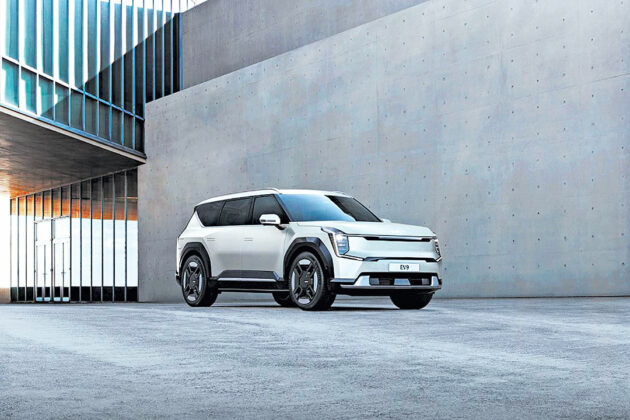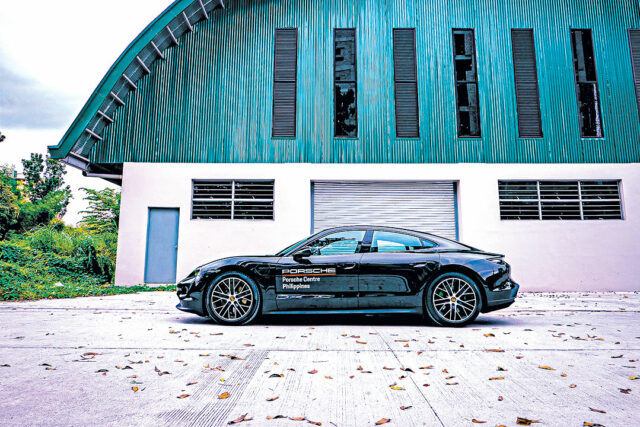Tomorrow’s car is here today, and it’s complicated — in a good way
WITH THE EXCEPTION of a flying car, we’re living in the golden age of The Jetsons. Instead of refueling, cars are charged like a mobile phone. You can talk to your car. Cars can drive by themselves.
The future is truly here and now.
So, what exactly are the things that are making these possible? Here are a few:
ELECTRIFICATION
The Philippines may be behind the more electrified automotive markets by at least five years, but we are fast catching up. Already, the majority of new cars introduced or announced this year have had at least one model or variant with one form of electrification or another (i.e., mild hybrids to hybrids to full EVs).
More importantly, charging stations are sprouting up like mushrooms in rainy season. But there is still a long way to go. The best news is that Filipino car buyers will soon be spoiled for choice with a fast-growing variety of electric vehicles available at various sizes and price points.
This might not completely eliminate our dependence on foreign crude oil, but it might, at the very least, minimize the amount of pollution in our already polluted and over-populated metropolis.
AUTONOMOUS VEHICLES
I got to experience first-hand a fully autonomous Kia Soul in no less than the convention capital of the technology world, the Consumer Electronics Show (CES) in Las Vegas.
That was way back in 2016 and, already, the car picked me up from the sidewalk from its slot in the sprawling parking area by itself, drove to the test track — using the signal lights at every turn (after which a Kia engineer sat behind wheel but did not touch the steering wheel) — and the car drove along the simulated highway, demonstrating maneuvers like avoiding a stalled car (it signaled then smoothly changed lanes), moving aside so an “ambulance” behind could pass, and stopping at red lights and stop lights — all without human intervention.
Already, some cars you can buy now have one form of semi-autonomous driving, thanks to technologies like Active Park Assist, Lane Change Detection and Alert, Rear Cross Traffic Alert, and a whole alphabet soup of Advanced Driver Assist Systems (ADAS). High-definition cameras work with sonar and radar sensors to enable the car to “see” and read the road and driving conditions ahead.
Autonomous vehicles aim to transform mobility by adding extra layers of convenience and, more importantly, safety. Once this technology is perfected (or at least brought as close to perfect as possible), it will reduce the number of human drivers. Fewer human drivers on the road mean lower chances of driver negligence, error, or fatigue.
CONNECTIVITY
This isn’t your usual Apple CarPlay or Android Auto connectivity. Car-to-car or car-to-network connectivity is possible when vehicles are given a unique digital identity that enables them to be tracked online.
This might seem like giving too much info or even an outright invasion of privacy, but it’s not much different from the IP address of your smartphone or laptop. It also helps in fleet and traffic management. Future connectivity means vehicles can exchange data with each other or with a network. Possible usage of this data is for real-time streaming to identify high-traffic roads or accidents and advise drivers on alternative routes to use, faster even than what we already get with Google Maps or Waze.
INTERNET OF THINGS
Closely associated with connectivity is IoT, which uses algorithms and enables the owner to monitor a vehicle’s condition and perform predictive maintenance, among a hundred other possible things. At the very least, it will help reduce downtime and improve the overall driving experience.
ARTIFICIAL INTELLIGENCE
AI automotive applications enable drivers to improve safety. Examples of AI in cars are vehicles that automatically slow down or even brake whenever a collision is imminent or when headlights sense oncoming cars and dim automatically.
3D PRINTING IN CAR DESIGN AND MANUFACTURING
My most recent visit to CES (in 2019) showcased many companies offering 3D printing services for the auto industry. A highlight was a whole sports car, and a sport bike, printed entirely in 3D (with the exception of the real rubber tires).
3D printing won’t revolutionize mass production; what it will transform is the art and science of designing and creating static or even working prototypes. From 3D modeling on a computer, a car designer will just send the file to a 3D printer and have the new part in his or her hands in minutes — a process that used to take days, accelerating the production of vehicles in the design phase and testing.
HUMAN-MACHINE INTERFACE
“Hey, Mercedes! Open the windows,” were the first words I ever uttered to a car. And that Mercedes did obediently open its windows. Today, many cars offer voice-activated virtual assistants. I’ve tested a BMW that offers gesture controls to adjust its audio system and climate control. If you’re familiar with Siri and Alexa, you’ll feel right at home with cars that boast human-machine interfaces (HMIs). HMI will help drivers increase efficiency and safety by letting them focus on just driving the car instead of manipulating various other vehicle controls.
BIG DATA ANALYTICS
Self-driving cars may be cool, but it’s big data that will blow you away. Analytics helps to make data-driven decisions in a vehicle’s life cycle. Data collection and analysis help in predictive maintenance, provides fleet information to managers, and even alert authorities if an accident occurs.
Big data in the auto industry can optimize supply, predict motor vehicle sales, and even help influence the design and styling of new and upcoming vehicles. Car companies are already using big data and analytics to streamline their operations and even improve their financial performance.
WHAT’S NEXT?
Future automotive innovations are redefining how companies plan, design, manufacture, sell, and service their vehicles. They have also transformed how people use and interact with their cars. Artificial intelligence, machine learning, human-machine interface, and IoT are just a few examples of the burgeoning technological trends in the automotive industry.
Big data and analytics help maintain and enhance the safety of motorists and other road users, making it safe for vehicles to communicate over the internet. These are just a few of the new technologies and innovations that will continue to transform the automobile and all its affiliated industries.
These innovations are so disruptive to the whole mobility ecosystem, the only thing that could beat them would be the debut of a flying car.









